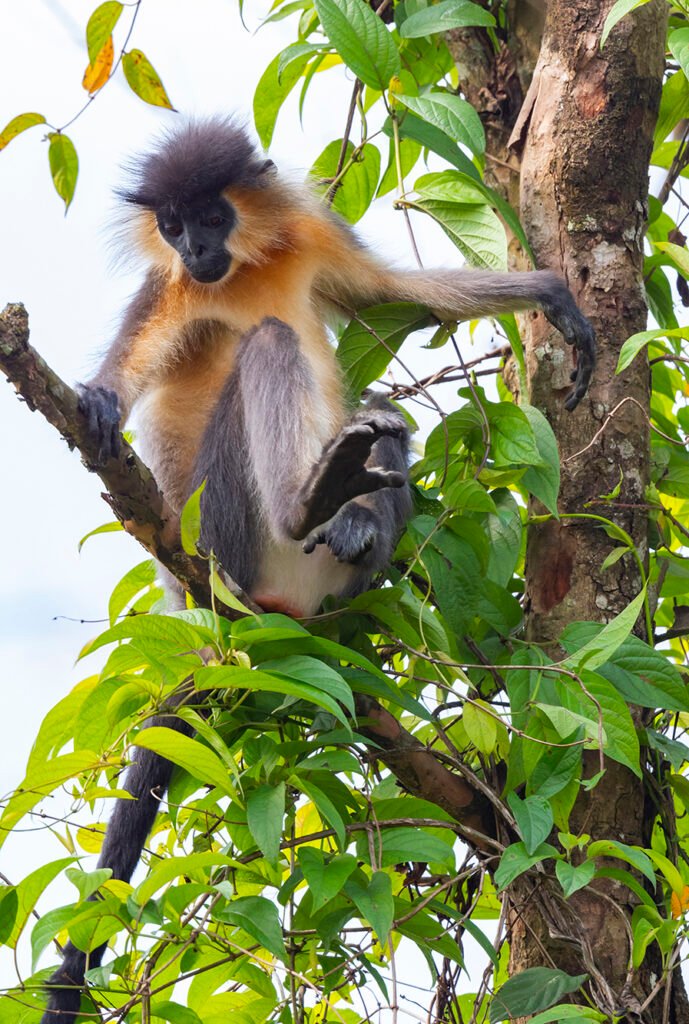The Bengal florican (Houbaropsis bengalensis), one of the rarest and most endangered birds in the world, is found in Assam, particularly in the floodplain grasslands of protected areas like Manas National Park, Kaziranga National Park, and Dibru-Saikhowa National Park. This species is listed as Critically Endangered by the IUCN due to habitat destruction and declining population

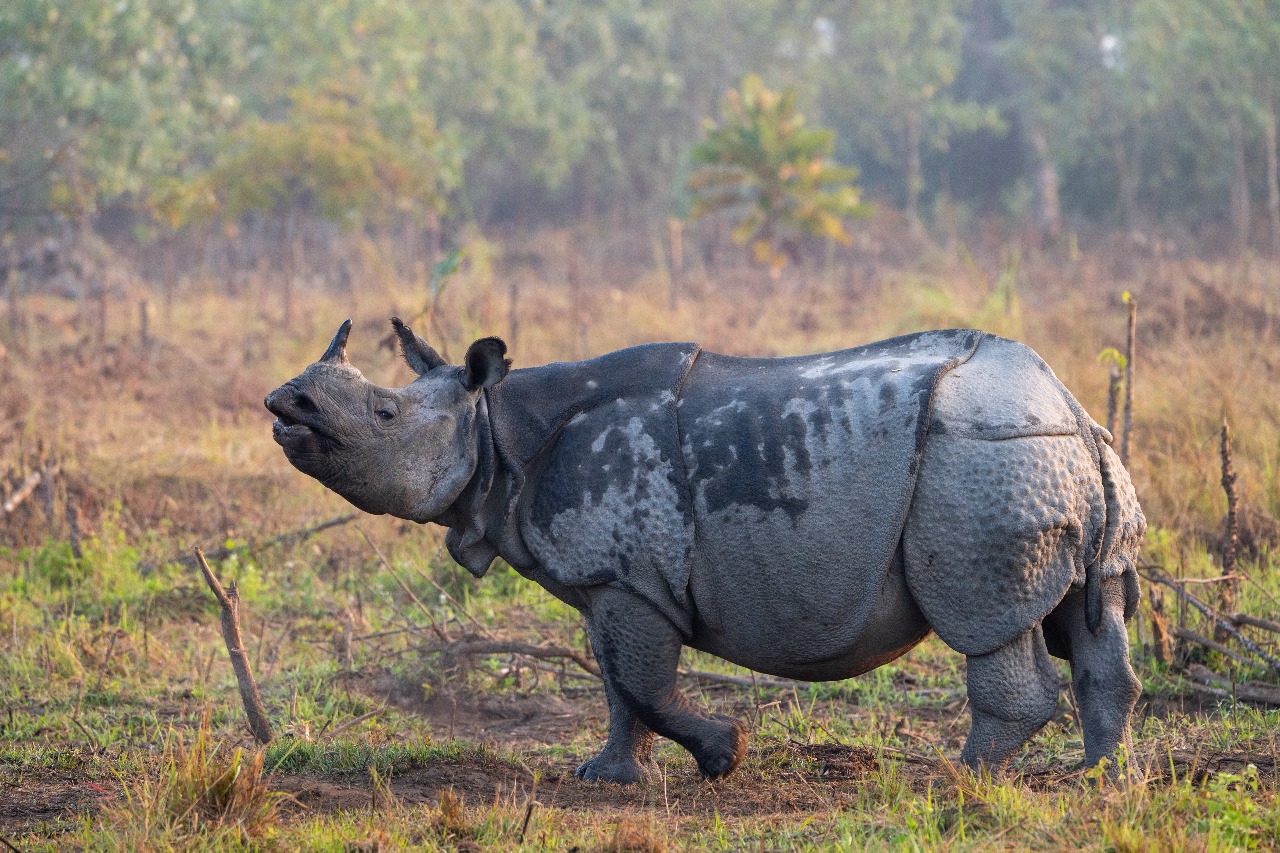
The Indian one-horned rhinoceros (Rhinoceros unicornis), also known as the Greater One-Horned Rhino, is one of Assam’s most iconic wildlife species. Assam is home to the largest population of this majestic animal, primarily found in Kaziranga National Park, which harbors more than 70% of the world’s population.
The Golden Langur (Trachypithecus geei) is one of the most beautiful and endangered primates found in India, particularly in the forests of western Assam. Known for its striking golden-orange fur, this species is found only in a small region between the Manas River in Assam and the Sankosh River in Bhutan.

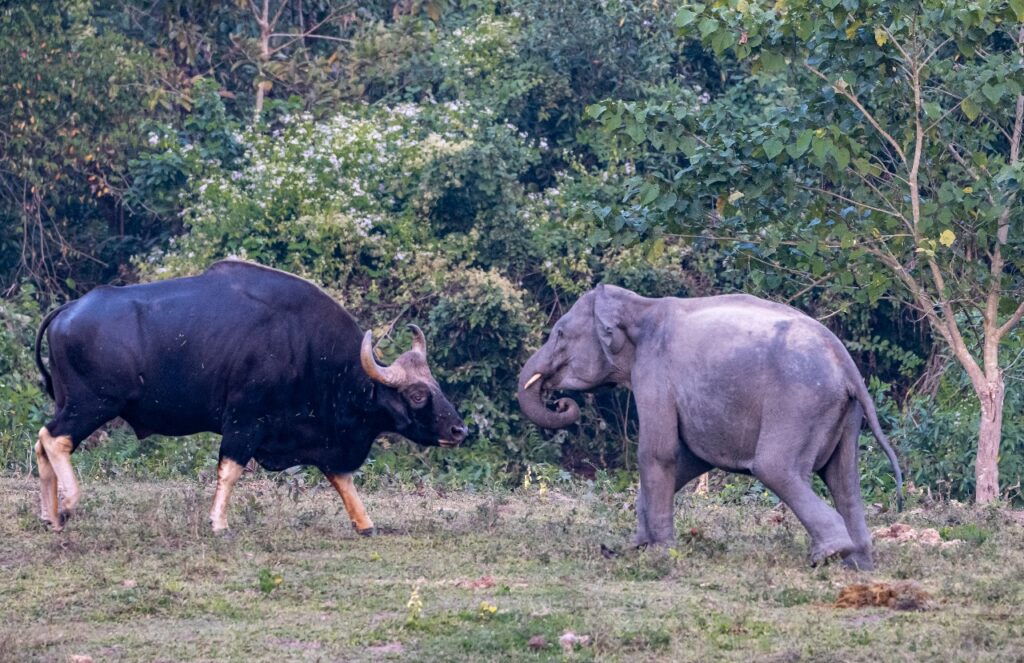
The Gaur (Bos gaurus), also known as the Indian Bison, is the largest species of wild cattle and one of the most majestic mammals found in Manas National Park, Assam. These massive herbivores are known for their muscular build, dark brown coat, and distinctive white “stockings” on their legs.
Dawki, a small town in Meghalaya’s West Jaintia Hills, is famous for the crystal-clear waters of the Umgot River. It is a major tourist attraction, offering breathtaking landscapes, adventure activities, and a unique cross-border trade route between India and Bangladesh.


Traditional dress from Northeast India plays a vibrant and significant role in tourism. Each of the eight Northeastern states—Arunachal Pradesh, Assam, Manipur, Meghalaya, Mizoram, Nagaland, Tripura, and Sikkim—has its own unique cultural attire that fascinates travelers and showcases the region’s ethnic diversity.
Nohkalikai Falls is one of the tallest and most breathtaking waterfalls in India, located near Cherrapunji in the state of Meghalaya. Plunging from a height of about 340 meters (1,115 feet), it is the tallest plunge waterfall in India.
Surrounded by lush green hills and misty cliffs, the falls are especially majestic during the monsoon season. The water collects in a striking blue-green pool at the bottom, adding to its scenic beauty.
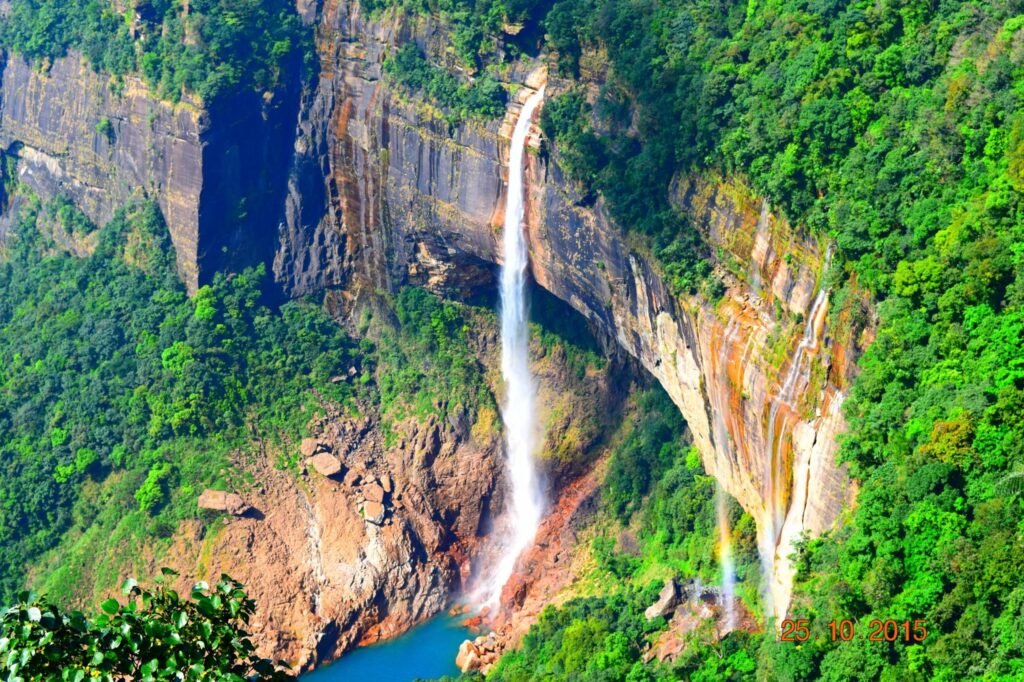
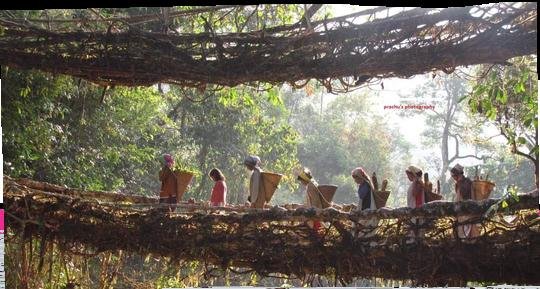
The Double Decker Living Root Bridge is a stunning natural marvel located in the village of Nongriat, near Cherrapunji in Meghalaya. It is made from the aerial roots of the Ficus elastica tree, trained and woven over decades by the indigenous Khasi tribe.
What makes this bridge unique is its two levels, one stacked above the other, formed naturally over time with human guidance. It’s both functional and sustainable, able to support the weight of many people at once and withstand harsh weather.
The Dollar Bird (Eurystomus orientalis) is indeed found in Manas National Park, Assam. It’s a striking, medium-sized bird belonging to the roller family, and is named for the distinctive silvery blue circular patches on its wings — resembling silver dollars — which are especially visible during flight.
Key Info about the Dollar Bird in Manas:
Season: It’s a migratory bird in parts of India — usually seen in Manas during the breeding season from April to September, though some individuals may linger longer in warmer climates.
Appearance: Dark greenish-blue body, orange-red bill and legs, and those classic white “dollar” spots on its wings.
Habitat: Prefers open forests, riverine woodlands, and forest edges — habitats that are plentiful in Manas.
Behavior: Perches conspicuously on high branches and swoops down to catch insects mid-air.
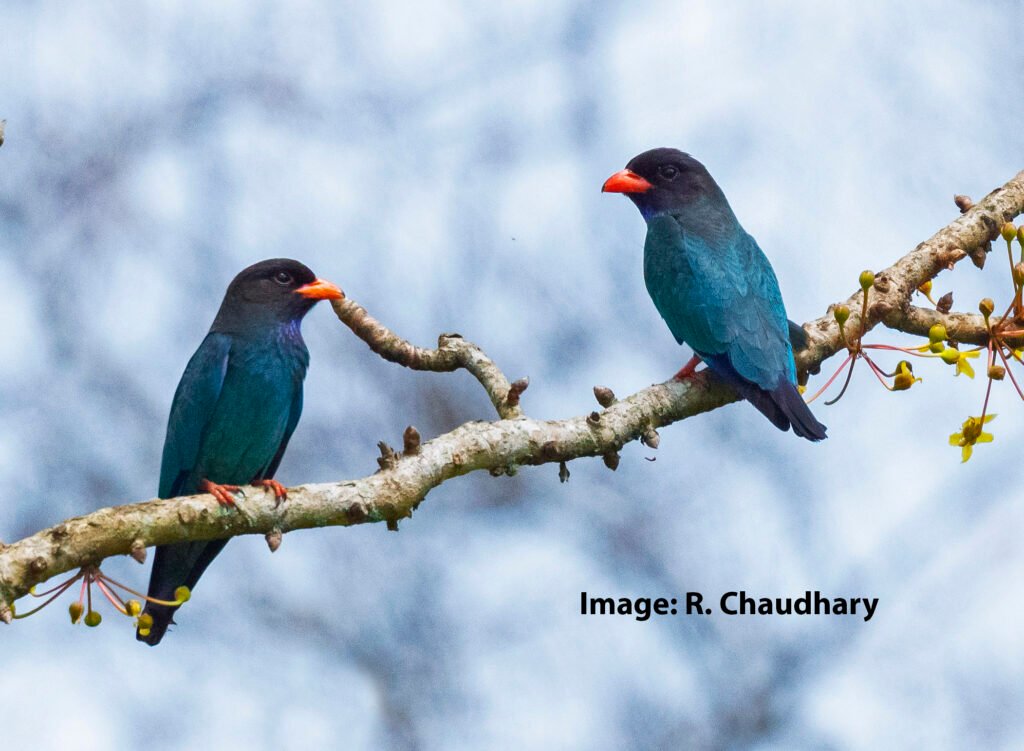

🐦 1. Black-naped Monarch (Hypothymis azurea)
- Appearance: Striking blue plumage with a distinct black patch on the nape and sides of the neck.
- Habitat: Forests, wooded areas, and gardens.
- Behavior: Very active insectivore; often seen flitting around in lower canopies.
- Common in: Forests of Kaziranga, Manas, and Dibru-Saikhowa.
Pied Kingfisher – Snapshot
Crest on the head gives it a cool punk-rock vibe.
Appearance:
Black and white plumage in a striking checkered pattern.
Males have a double black band across the chest; females usually have a single incomplete band.

Habitat in Assam:
- Brahmaputra River, Kaziranga’s wetlands, Manas riverine systems, and floodplains across Dibru-Saikhowa, Deepor Beel, and Nameri are hotspots.
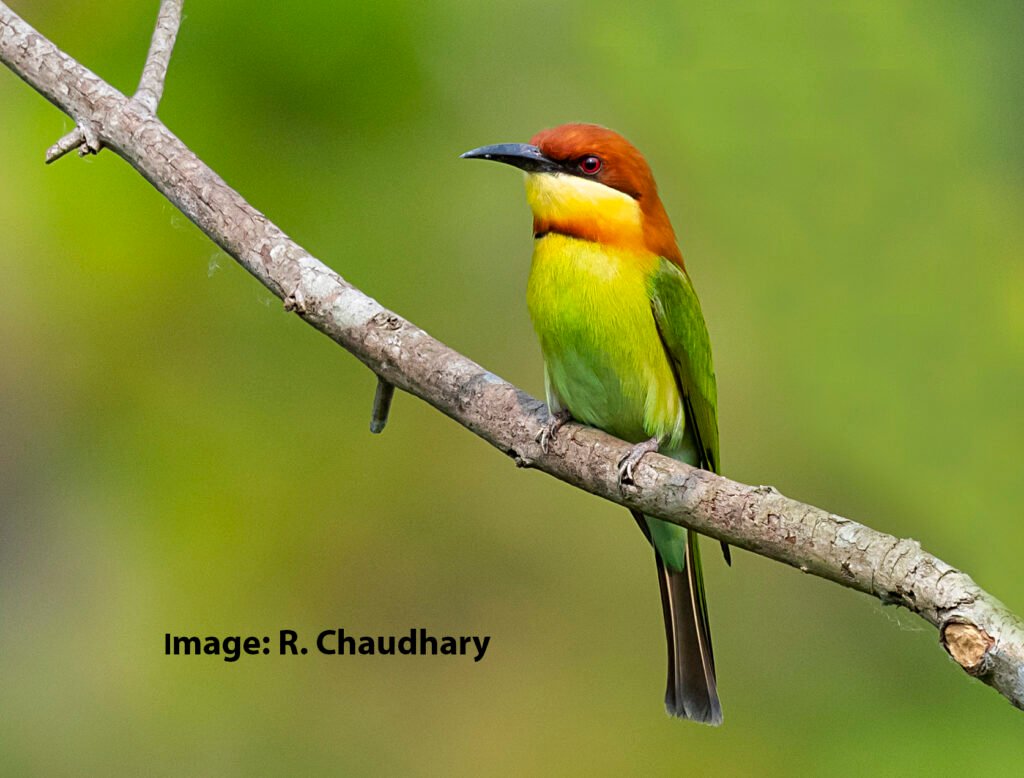
Chestnut-headed Bee-eater – At a Glance
Tail has elongated central feathers.
Appearance:
Striking chestnut (reddish-brown) head, nape, and throat.
Bright green body, with a golden-yellowish lower throat bordered by a black line.
Long slender black bill and gracefully pointed wings.
Where to Spot Them in Assam:
- Kaziranga National Park
- Nameri National Park
- Manas National Park
- Dehing Patkai Wildlife Sanctuary
- Hollongapar Gibbon Sanctuary
- Riverine forests and forest clearings are prime habitats.
🏯 Tawang Monastery – Quick Facts
Other Name: Also called “Galden Namgey Lhatse”, meaning “celestial paradise in a clear night.”
Location: Tawang town, Arunachal Pradesh, at about 10,000 feet (3,048 m) altitude.
Founded: In 1680 by Merak Lama Lodre Gyatso, under the patronage of the 5th Dalai Lama.
Sect: Belongs to the Gelugpa (Yellow Hat) sect of Tibetan Buddhism.


Krangshuri Waterfalls – Overview
Height: Approximately 40 feet (12 meters), cascading into a wide, crystal-clear pool.
Location: Near Amlarem, about 30 km from Jowai, and around 90 km from Shillong.
Region: West Jaintia Hills, Meghalaya.
Type: Plunge waterfall.
Giant Buddha Statue – Tawang
Posture: Depicts Lord Buddha in a seated meditative pose, facing the town — blessing the land with calm and spiritual energy.
Location: On a hilltop near the Tawang Monastery, offering a panoramic view of Tawang town and valley.
Height: Approximately 18 to 20 meters (about 60+ feet).
Material: Painted in brilliant gold and ochre, the statue glows against the backdrop of snow-capped mountains.

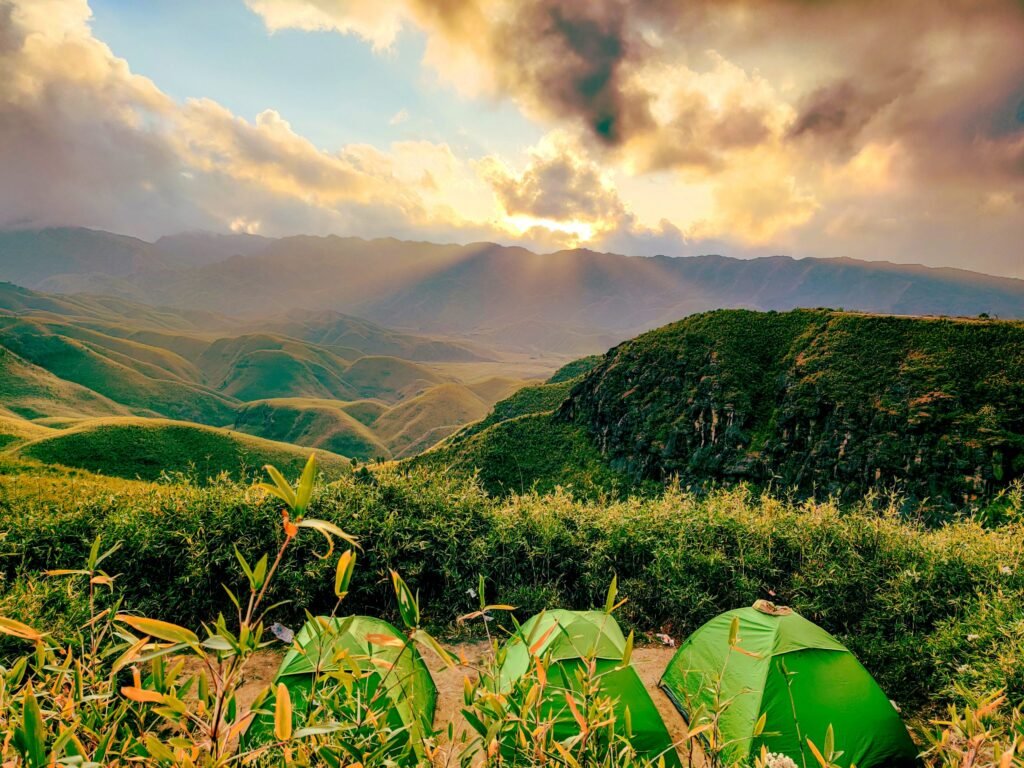
Dzukou Valley – The Basics
Altitude: Around 2,452 meters (8,045 feet) above sea level.
Location: Straddles the border between Nagaland and Manipur.
Closest access point is from Viswema or Zakhama village near Kohima, Nagaland’s capital.
🌊 Loktak Lake – Key Facts
Significance: Ecological, economic, and cultural heartbeat of Manipur.
Location: Near Moirang, about 50 km from Imphal, Manipur.
Area: Covers over 287 sq. km — the largest freshwater lake in Northeast India.
Unique Feature: Home to “phumdis” — floating masses of vegetation, soil, and organic matter.

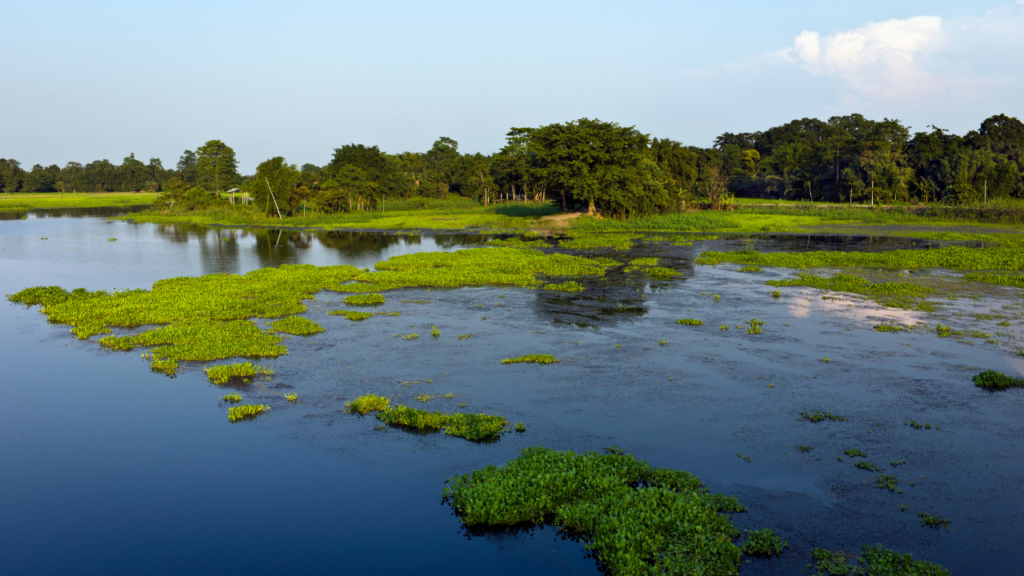
Majuli is the world’s largest river island, nestled in the Brahmaputra River in Assam. It’s not just a natural marvel, but also a vibrant cultural hotspot.
🌿Samguri Satra is famous for its traditional mask-making.
Majuli is the cultural heart of Assam’s neo-Vaishnavite movement, founded by the saint Srimanta Sankardeva.
It’s home to over 20 satras (monasteries), where monks practice art forms like dance (Sattriya), music, mask-making, and manuscript painting.
🕺 Bihu Dance – The Joyful Heartbeat of Assam
Bihu Dance is the most vibrant and energetic folk dance of Assam, performed during the Rongali Bihu festival in mid-April to celebrate the Assamese New Year and the arrival of spring.
🎉 Festival Vibes
It marks planting season and fertility, celebrating new beginnings, love, and community.
Performed during Rongali (Bohag) Bihu, the most important of the three Bihu festivals (the others are Kati Bihu and Magh Bihu).
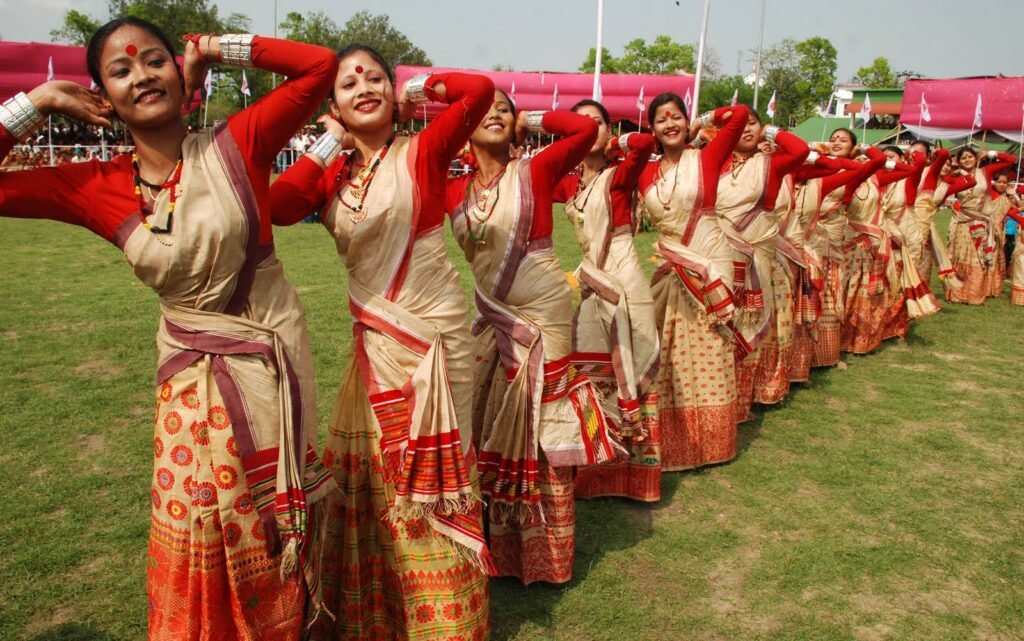
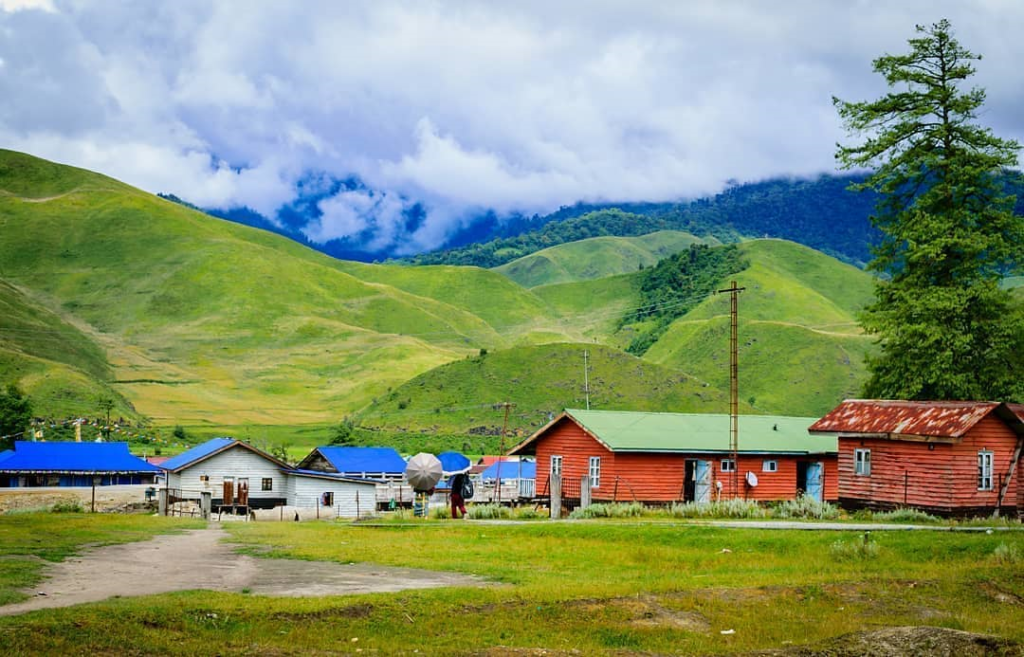
🏔️ Mechuka – The Magical Valley of Arunachal Pradesh
Mechuka, also spelled Menchukha, is a serene and remote valley town located in the Shi-Yomi district of Arunachal Pradesh, close to the Indo-China border.
🌄 What Makes Mechuka Special
- Nestled at around 6,000 feet, surrounded by majestic mountains, pine forests, and grazing meadows.
- A stunning mix of natural beauty, tribal culture, and spirituality.
- The valley is bisected by the Siang River (a tributary of the Brahmaputra).
Hornbill Festival – The Festival of Festivals
Held every year from December 1st to 10th in Kisama Heritage Village, near Kohima, the Hornbill Festival is Nagaland’s grandest celebration — a cultural explosion of tribal life, music, dance, food, and heritage.
🎭 What Makes It Special
- Showcases the rich traditions of all 17 major Naga tribes in one place.
- Named after the great Indian hornbill, a revered bird in Naga folklore and tribal art.
- A beautiful blend of tribal rituals, warrior dances, indigenous sports, and folk songs.


The Red-breasted Parakeet (Psittacula alexandri), also known as the Moustached Parakeet, is indeed found in Assam and other parts of Northeast India.
🌿 Where to Spot in Assam:
- Kaziranga National Park
- Nameri National Park
- Manas National Park
- Around Majuli Island
- Even near urban parks and gardens in Guwahati
Capped Langur – Quick Overview
- Appearance:
- Named after the dark cap of hair on its head.
- Body is typically pale grey to orange-buff, with a dark face and hands.
- Long, graceful tail helps with balance while leaping through trees.
- Habitat:
- Primarily arboreal (tree-dwelling), found in moist deciduous and evergreen forests.
- Assam is a key habitat, especially in:
- Kaziranga National Park
- Manas National Park
- Nameri National Park
- Hollongapar Gibbon Wildlife Sanctuary
